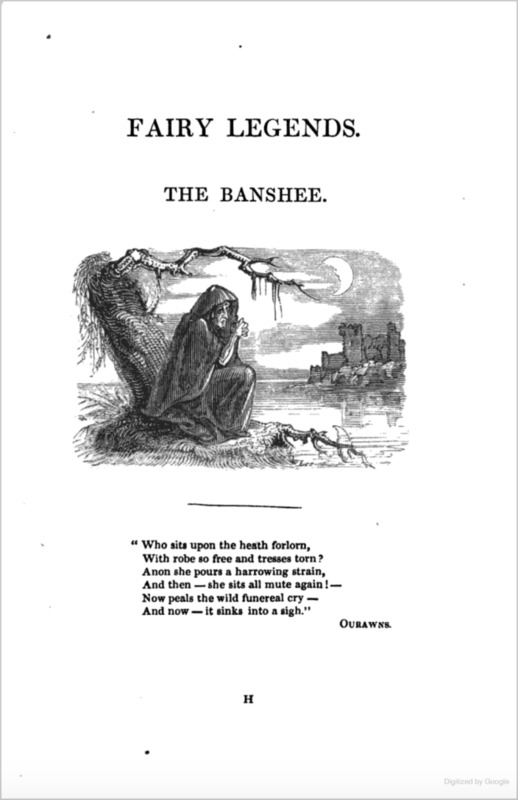Mórrigan
When looking into the feminine deities of Ireland, one of the most influential is the Mórrigan, goddess of battle, earth, and sexuality (Clark 1987). She appears at times as a single goddess or a triple goddess (Badb, Macha, and Nemain). The Celtic pantheon brims with warriors and epic battles, and the Mórrigan is a figure of shining influence in this sphere. An interesting correlation between the Mórrigan and the banshee occurs when looking at the etymology of the name “Mórrigan.” According to Clark, it may mean “Great Queen,” “Sea Queen,” or, more relatedly to the banshee, “Phantom Queen” (Clark 223-224). The article even states that “Phantom Queen” is seemingly the best interpretation (Ibid. 223). The part of the word "mor" derives from Old High German "mara" and Anglo-Saxon "maere" (Ibid. 224). It is incredibly interesting that the root survives within the English word nightmare, which is not meant to mean “horse,” but rather, a fearful female spirit (Ibid.). The Bunworth Banshee, by Thomas Crofton Croker stands as a testament to that interpretation, as the spirit induces fear for others. The character Kavanaugh is distressed in his experience with the banshee while he “came through the glen of Ballybeg, [the banshee] was along with [him] keening and screeching and clapping her hands, by [his] side every step of the way, with her long white hair falling all about her shoulders, and [he] could hear her repeat the master’s name every now and then (Crofton Croker 224).” It is a distressing experience for the main character as he tries to recount to his Master’s wife his encounter with the Phantom of Death. Utilizing this correlation between the Mórrigan and the banshee, one can come to the conclusion that the two are clearly related. The Mórrigan is also heavily associated with the Badb or the modern name "crow" (ibid. 225). Interestingly, Clark writes that a connection between the Badb and the banshee seems likely; “both are female spirits who prophesy death and destruction and terrify people with their fearsome howls (ibid. 226).” In the inspection of these figureheads within this triple goddess figure, one can follow a connected framework from the pagan goddess to the banshee. However, it is interesting to see the contrast between a complex goddess like the Mórrigan, which embodies aspects of war, earth, and sexuality, being practically diminished. If one thinks of the banshee as a surviving symbol of the divine feminine following the conversion to Christianity, one can see the diminished power of the banshee in comparison. The banshee does not possess obvious strength and is not able to change the fates of those she warns of death. People also begin to view her as someone who brings death instead of as one who can control death, like the Mórrigan does. This divine female figure no longer holds as strong of a spiritual position as this Celtic deity once did, but rather highlights the unfortunate theme of female figures being continuously undermined and weaponized throughout history.
